The Top 5 Aromatic Herbs For Your Cottage Herb Garden
In this post, I’ll to share my top 5 herbs for a cottage garden. If you’re interested to fill your garden with nice fragrances and practical culinary seasoning, then this little herbal guide is just for you.
Every herb I mention here holds a little special place in my raised garden bed, and I have been growing them for years. Consider this post as my personal review of these enchanting cottage garden herbs.
I’ve found most of these herbs from my local nursery, and they were under $5 each when I bought them. Considering how much value I got from them over the years, I’d say it is a great deal!
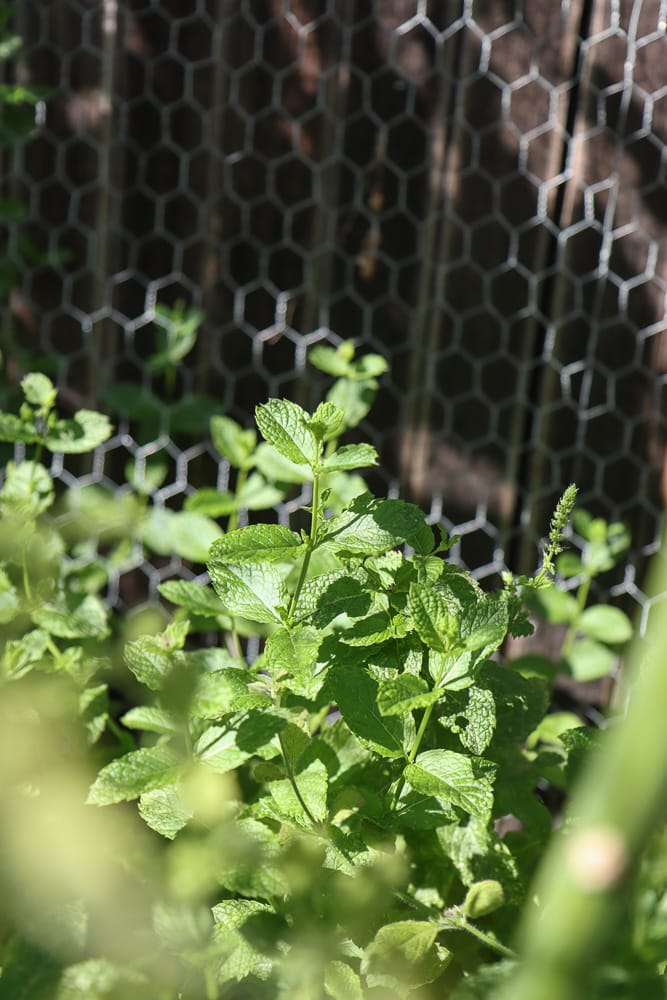
Each one of the herbs on my list has a robust growth pattern. Being in a warm region, zone 9-10, they thrive in my garden throughout the year.
If you are living in a colder zone, you still get to enjoy herbs year over year. Many herbs are perennials, coming each year.
Other herbs are annual that you can grow from affordable seed packets, usually around two bucks! Also herb seeds tend to have a longer shelf life so you can sow them for several years using the same seed packet.
Why growing a cottage herb garden?
Why growing herbs in your cottage garden?
As someone who is busy with work and doesn’t have much time for extensive gardening, I’ve found that growing herbs is a game-changer.
Unlike vegetables like peas and green beans, which require careful timing, protection from pests, and disease control, herbs are incredibly easy to grow. They are just perfect for lazy gardeners like me.
Growing aromatic herbs is also a rewarding experience with little investments. Whenever I need fresh flavors for cooking or a soothing herbal tea, I simply step into my cottage garden and pick the herbs I need.
I use them for cooking steak, fish, or simply throwing in a salad.
Excited to know more about these beautiful cottage garden herbs and my thoughts on them? Let’s delve into it!
1. Thyme

Thyme is a hardy perennial, with tiny yet aromatic leaves. The leaves release a captivating fragrance when touched.
What makes Thyme stand apart is its purple-hued blooms. The flowers are a delicate combination of lilac at the center and a pale shade on the outer petals, which adds to its unique beauty.
As Thyme blooms, the purple hue of the flowers brightens, adding a mystical touch.
Being a repeat bloomer, thyme will grace your garden with its presence throughout the year, barring the winter months.
I’ve planted Thyme inside my raised garden bed. I love how thyme is so compact so the maintenance is almost minimal. Btw, you can also grow thyme as a ground cover – we surely considered that when were selecting our ground cover for our front yard.
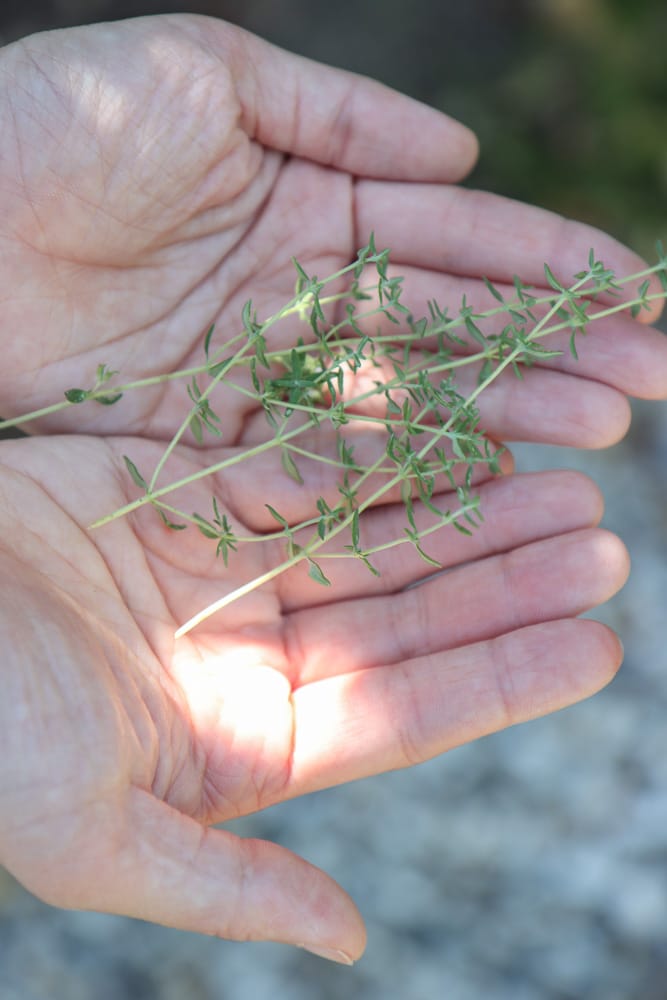
Two common thyme species are Lemon Thyme and German Thyme. Lemon Thyme offers a zesty citrus twist, perfect for teas and desserts, while German Thyme brings a classic savory flavor, ideal for enhancing meat dishes and stews.
I grow German thyme and I often use it when I’m cooking steaks – something I’ve learnt when working at a startup in the food-tech industry.
2. Mint
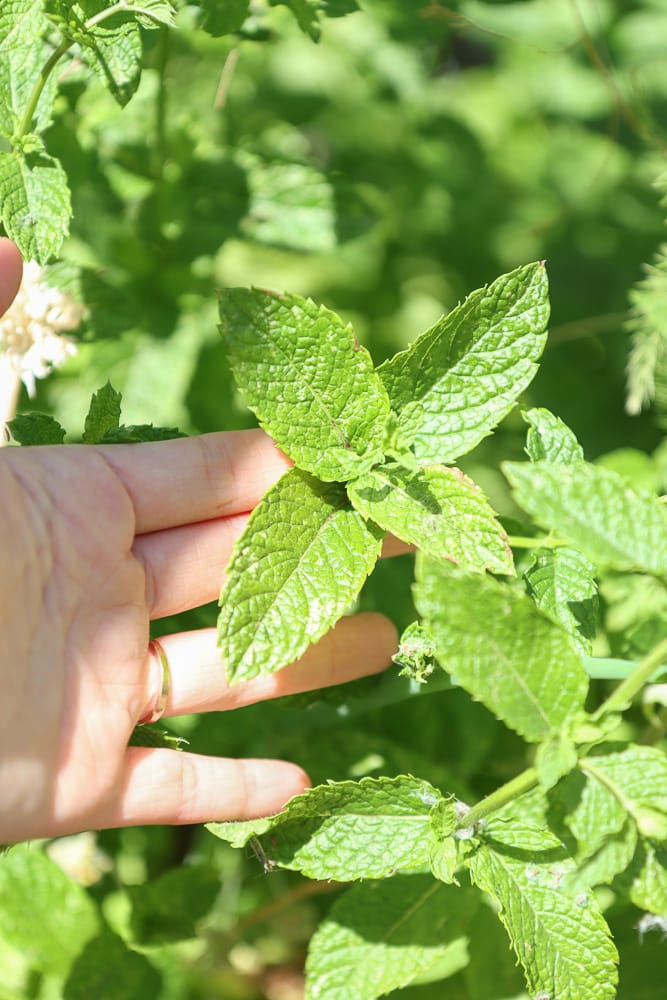
Mint is a rapid grower and perennial, boasting vivid green leaves that release an unmistakable cooling aroma when rubbed.
What I find intriguing about mint is its versatility. Tiny purple, white, or pink flowers adorn the plant, adding a subtle pop of color to your green canvas, which will make your cottage garden so lush and beautiful.
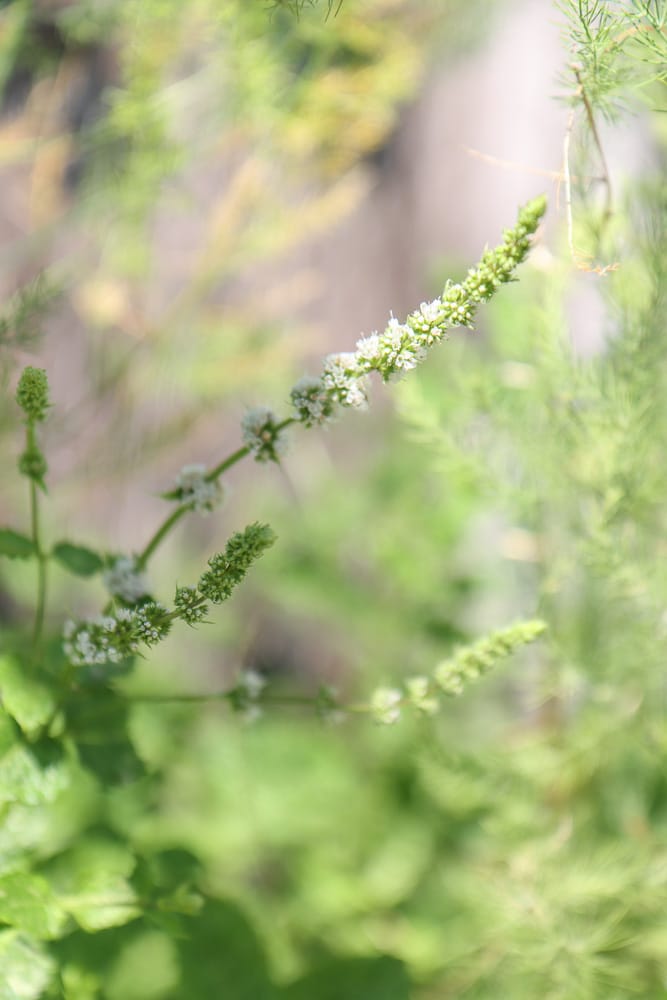
As it matures, the mint spreads to create a verdant, aromatic carpet. Being a perennial, the refreshing essence of mint is at your disposal all year long.
I started growing mint at a little corner in my garden bed, and was soon surprised how it has filled the place, offering an arena of freshness in every season.
If you’d like to keep the plant small, prune it every few months.
Mint is actually very versatile. My husband likes to pick a couple of fresh leaves and make peppermint tea for their natural health benefits. Peppermint tea is believed to have soothing properties that can aid in digestion, alleviating bloating and gas.
Another great way to use the mint you grow is by adding it to salads. Mint pairs well with various greens and fruits, infusing them with a burst of refreshing flavor.
You can use them for dishes like watermelon feta salad or cucumber mint salad.
3. Dill
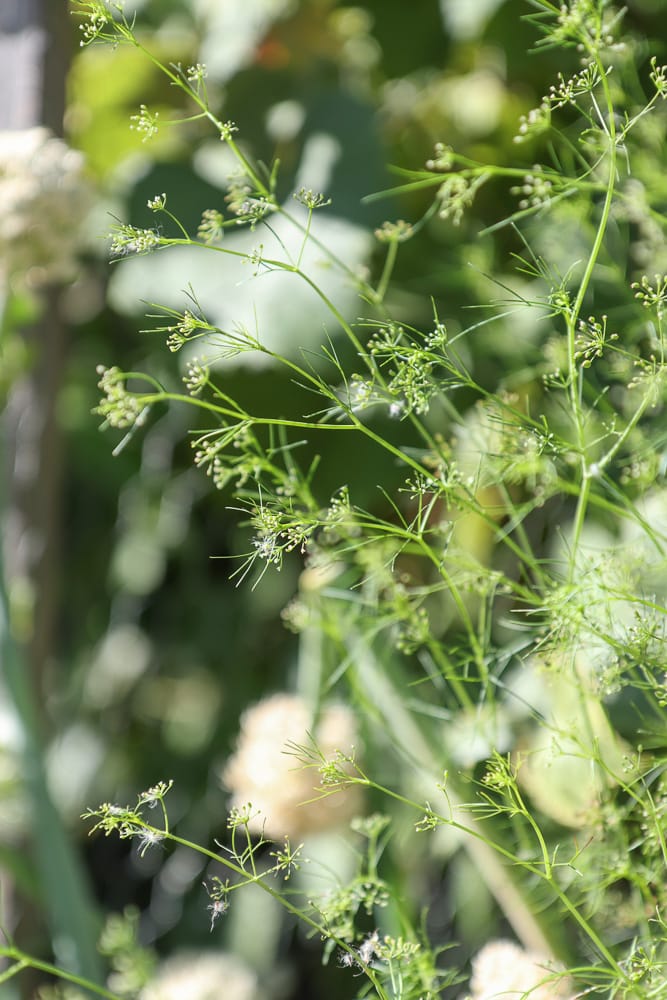
Dill is a hardy annual herb, and with its feathery foliage and distinct aroma, is an excellent addition to any cottage garden.
For an abundant cottage garden, it is all about mixing the color and texture of various herbs, and dill plays a significant role in achieving that vibrant harmony.
The feathery and fern-like foliage of dill adds a unique dimension to your garden’s visual appeal. It complements the lush greens of other herbs.
With delicate blue-green leaves and airy yellow flowers, dill lends a dreamy contrast to a cottage garden, and makes beautiful cut flower compliments.
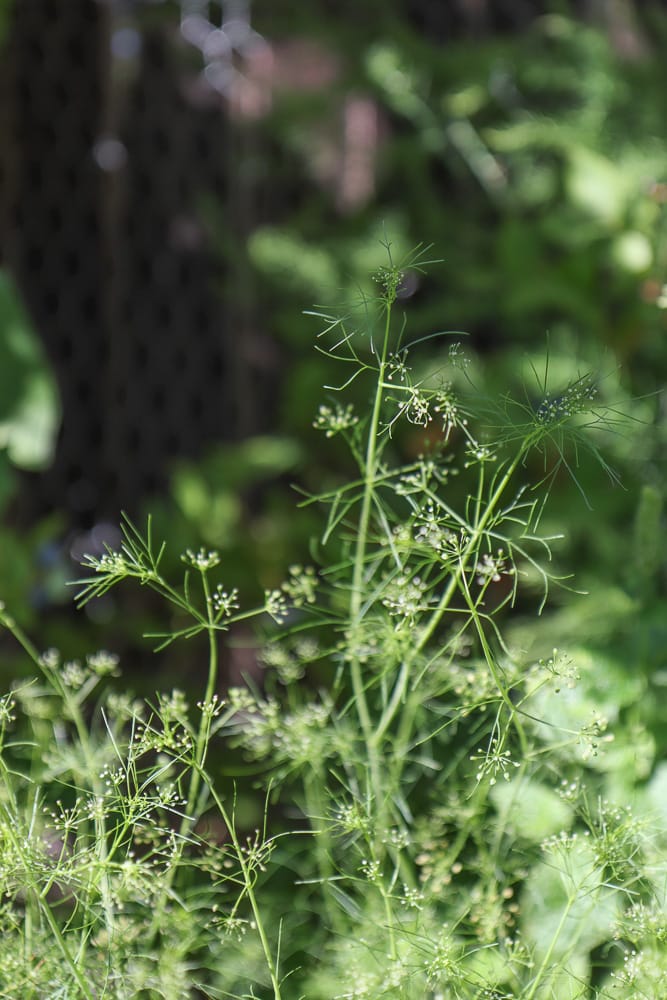
Sometimes I buy herbs for their aroma, look. Well, I grow dill for its culinary usage.
In the kitchen, dill is a culinary gem. Its fresh and tangy flavor pairs beautifully with a wide range of dishes. Add chopped dill to salads, sauces, dressings, or use it as a garnish for fish, chicken, and roasted vegetables.
As someone who is trying to eat healthy, we cook salmon quite often at home. Luckily, dill and salmon make a heavenly match! The herb’s aromatic flavor perfectly complements the rich, buttery taste of salmon.
Whether you’re seasoning the salmon with a dill-infused marinade or adding fresh dill as a finishing touch, this pairing will definitely elevate your dish.
4. Lavender
Lavender is an evergreen perennial with its stunning purple blooms and intoxicating fragrance, and is a popular choice for a cottage garden.
I planted several lavender plants as a border along my backyard fence. They not only add a pop of color but also infuse the air with its scent, which is quite pleasant whenever they are in bloom
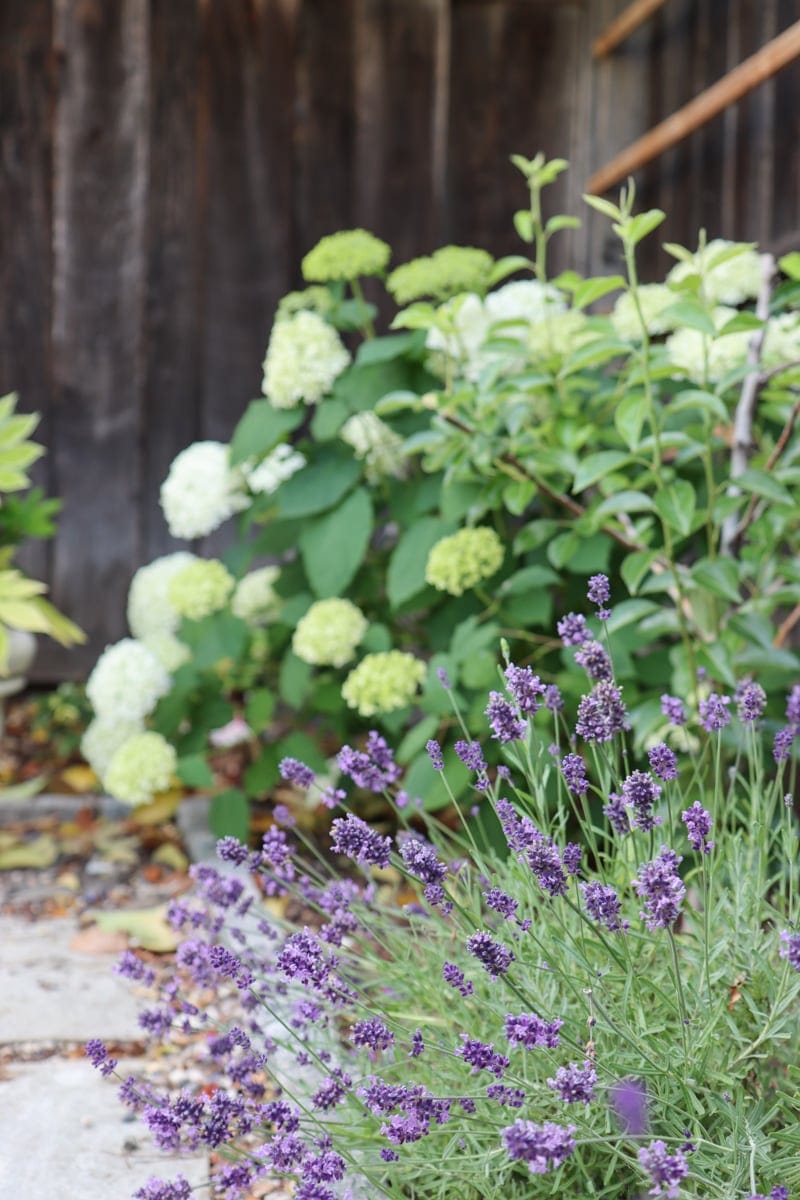
At the height of its bloom, if you’d like to preserve the flower for its scent, you can harvest the lavender flower buds just before they unfurl, as this is the perfect time to create soothing sachets to put in my closet.
You can also use those dried buds in handmade soaps.
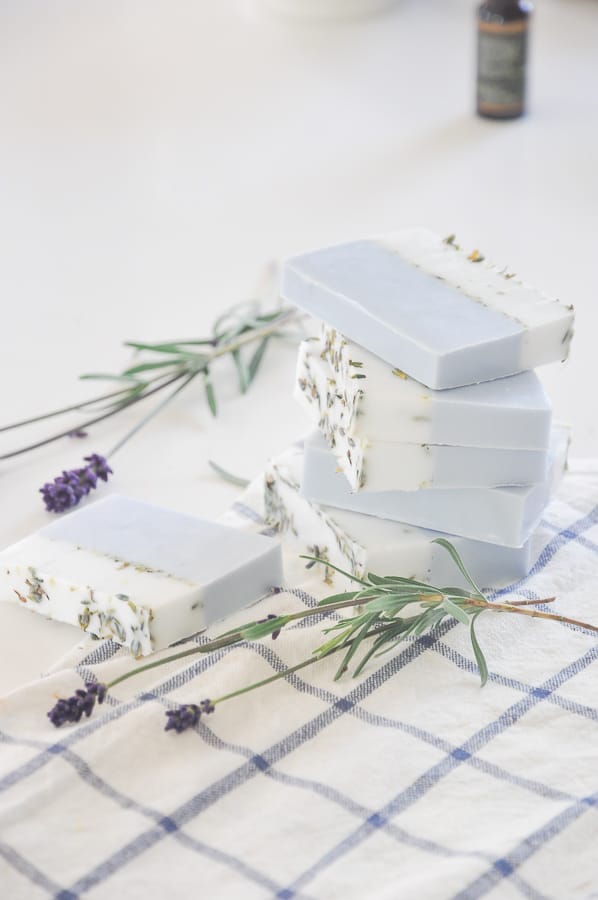
Lavender grows vigorously and is pretty easy to care for. Lavender’s growth is truly remarkable, thriving with vigor and expanding its reach effortlessly.
However, I’ve learned to approach pruning with caution, as I unfortunately lost a few plants to over pruning.
Over-pruning can lead to the death of lavender plants because this herb is sensitive to severe pruning, especially during certain times of the year. Lavender plants have a woody base, and cutting back too much of the older wood or pruning too late in the growing season can result in the plant’s decline.
If you are sold to grow lavender in your cottage garden, here’s my no.1 tip to acquire the plant: It is quite challenging to grow this herb from seeds, either during sprouting the seed, or growing the sprout to a mature plant.
So unless you are a very experienced gardener, I generally recommend purchasing baby lavender plants from a store, sparing yourself the uncertainty of seed germination.
5. Lemon Balm
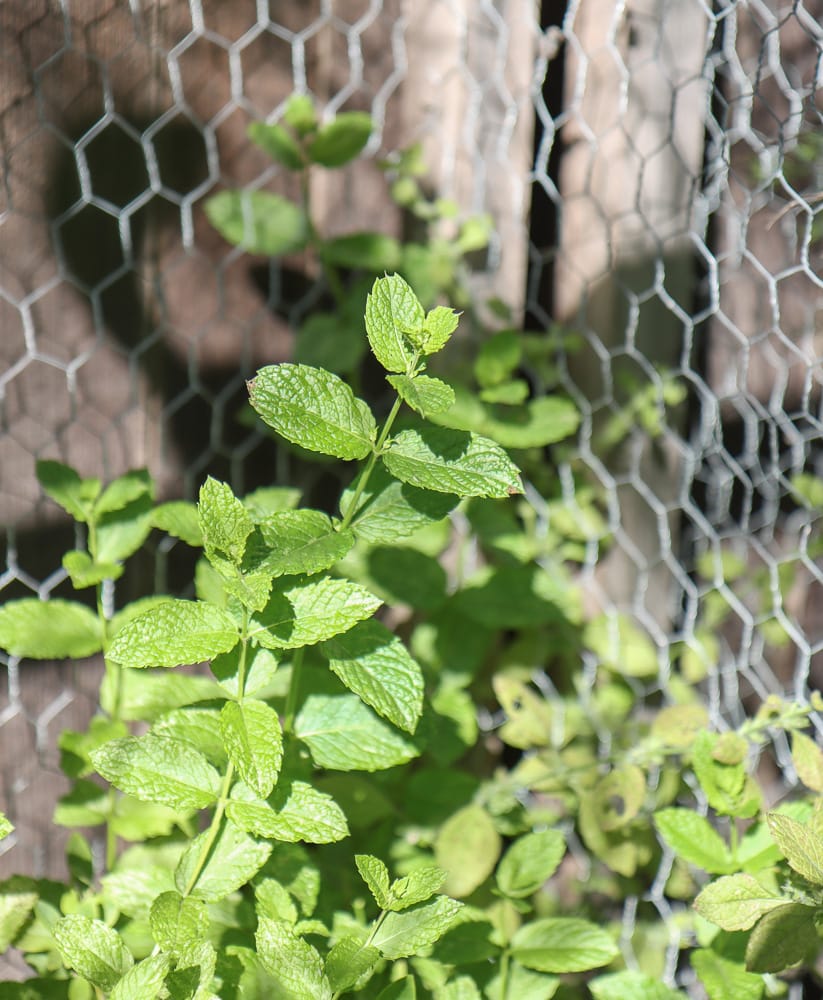
Lemon Balm needs no introduction–this fragrant herb can be used to make a calming tea with a citrusy scent, which can be used to reduce stress and anxiety, and some say it can even improve digestion. Perfect for a bedtime winding down routine!
Lemon Balm is a perennial plant boasting golden-green leaves. The leaves emit a delightful lemony scent when rubbed.
Lemon balm is a fast-growing plant, and you will need to prune it to prevent it from taking over your garden bed! The good news is these cuttings can be dried and used to make lemon balm tea during the winter when the plant is not growing.
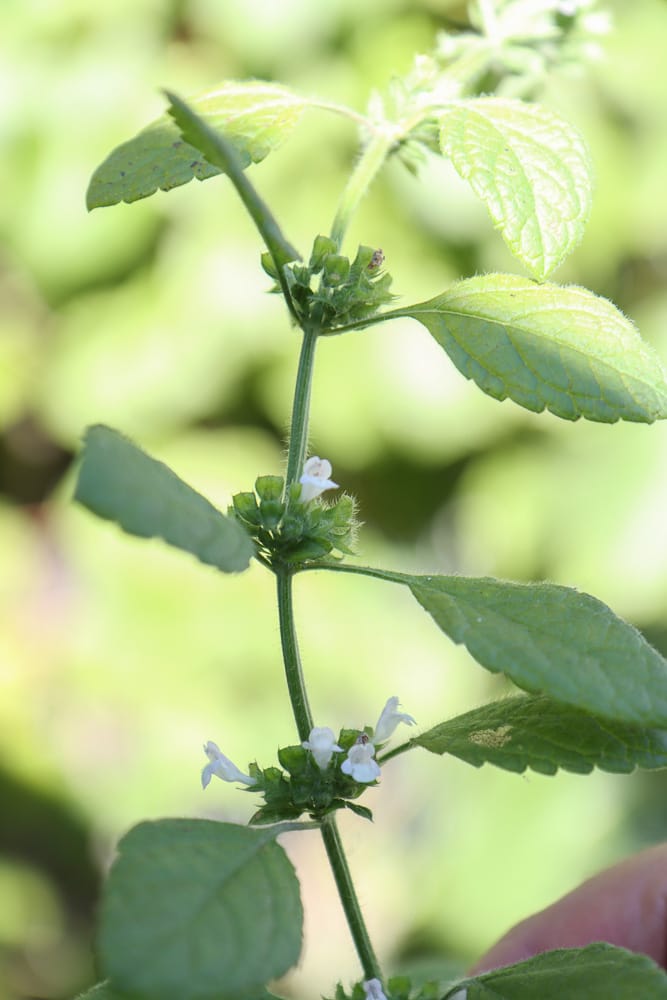
To prepare the cuttings for dried tea, tie together several stems with a piece of string, and hang them to dry in a cool spot in your home. After they are dry, you can store them in your pantry and use them to make tea. If you see mold, be sure to discard them.
Unique to Lemon Balm are its small, white flowers. The bees in your garden will love these flowers!
Being a perennial, Lemon Balm is available to add delightfulness to your garden and teas all year long, but I find that it grows faster in the spring and summer, and slows down in the winter. So I try to avoid pruning it in the winter.
In our fast-paced modern world, lemon balm tea is a great way to unwind and relax, and the herb is easy to grow yourself.
Best cottage garden herbs summary
In this cottage herb garden guide, I’ve shared my top 5 aromatic herbs for a delightful cottage garden. What are your favorite five herbs in your garden?
These herbs thrive in my warm zone, providing year-round abundance, pleasant fragrances, and are great for cooking.
Whether you’re a seasoned gardener or just starting, these herbs will make your cottage garden a fragrant and delightful haven.
Pin it for later
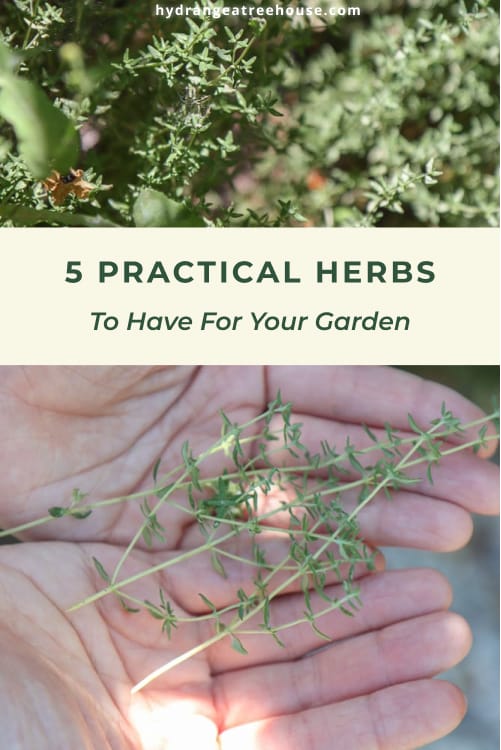
More cottage garden ideas
Best cottage garden roses from my rose garden
Incrediball hydrangea vs annabelle hydrangea, a side by side comparison
